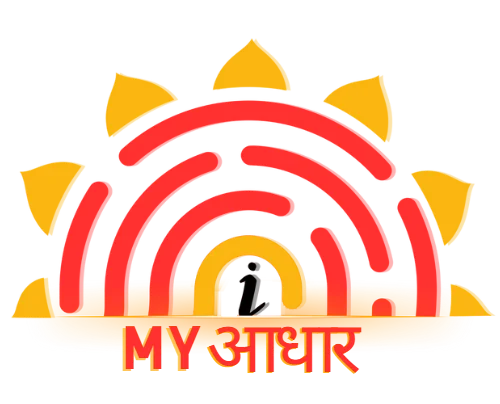UIDAI Details
What is UIDAI ?
UIDAI (Unique Identification Authority of India), It is a statutory authority established by the Indian government to issue unique identification numbers, known as Aadhaar, to residents of India. The Aadhaar number serves as a 12-digit unique identification and is used for various government and private sector services, ensuring efficient and targeted service delivery. UIDAI is responsible for the management and authentication of Aadhaar-related data, ensuring the security and privacy of citizens’ information.
The UIDAI was initially operating as an office linked to the Planning Commission (now known as NITI Aayog) before it was created as a statutory entity. The UIDAI is now a component of the Department of Electronics and Information Technology (DeitY), thanks to a government revision made on September 12th, 2015.
In India, the first UID was assigned back in 2010. The first Indian to acquire a UID was a resident of Nandurbar, a rural area of Maharashtra, on September 29, 2010. Aadhaar had 1.22 billion registered users in India as of July 2018.
Function of UIDAI
The primary functions of the Unique Identification Authority of India (UIDAI) are as follows:
- Issuance of Aadhaar: UIDAI is responsible for issuing unique 12-digit Aadhaar numbers to residents of India. This serves as a proof of identity and address and is used for various government and private services.
- Data Management: UIDAI collects and manages demographic and biometric data of individuals during the enrolment process. It ensures the security and privacy of this data.
- Aadhaar Authentication: UIDAI provides Aadhaar authentication services to government and private agencies. This allows them to verify the identity of individuals before providing services.
- Aadhaar Updates: UIDAI facilitates the update and correction of Aadhaar details, such as address, name, date of birth, etc., to ensure accurate and up-to-date information.
- Aadhaar Enrolment Centres: UIDAI sets up Aadhaar enrolment centres across the country to facilitate the enrolment process for residents.
- Grievance Redressal: UIDAI addresses complaints and grievances related to Aadhaar services and takes necessary actions for resolution.
The key objectives of UIDAI's mission are
- Universal Identity: To issue a unique and robust 12-digit Aadhaar number to all residents, ensuring a universal identity for every individual in India.
- Inclusive Development: To promote inclusive and equitable development by enabling access to government services, subsidies, and benefits to the underprivileged and marginalized sections of society.
- Efficient Service Delivery: To enhance the efficiency and transparency of service delivery by enabling Aadhaar-based authentication, eliminating duplicate and fake identities.
- Data Security and Privacy: To ensure the security and privacy of residents’ biometric and demographic data, adhering to strict data protection standards and guidelines.
- Seamless Authentication: To provide secure and seamless Aadhaar-based authentication for various government and private sector services, enabling quick and convenient access to essential services.
- Technological Advancement: To continuously innovate and upgrade technological infrastructure, ensuring the integrity and reliability of Aadhaar data and services.
- Citizen Empowerment: To empower citizens with a unique identification that serves as a valid proof of identity and address for availing services and exercising their rights.
- Anti-Fraud Measures: To implement robust measures to prevent identity fraud, ensuring the integrity and credibility of the Aadhaar ecosystem.
Organizational structure of the
UIDAI
The Unique Identification Authority of India (UIDAI) follows a hierarchical organizational structure to carry out its functions effectively. As of my knowledge cutoff in September 2021, the organizational structure of UIDAI includes the following key components:
- Chairman: The Chairman is the head of UIDAI and provides overall guidance and leadership to the organization. The Chairman is appointed by the Central Government.
- Chief Executive Officer (CEO): The CEO is responsible for the day-to-day operations of UIDAI and implementation of its policies and programs. The CEO oversees various divisions and departments within the organization.
- Deputy Director General (DDG): The Deputy Director General is responsible for specific functions and departments within UIDAI. They assist the CEO in carrying out various tasks and responsibilities.
- Divisions and Departments: UIDAI is divided into multiple divisions and departments, each focused on specific functions and services. Some of the key divisions and departments include Enrolment and Update, Aadhaar Authentication, IT and Technology, Legal and Compliance, Grievance Redressal, and Communications.
- Regional Offices: UIDAI has several Regional Offices across different states and Union territories of India. These regional offices oversee enrolment and updation activities in their respective regions and coordinate with enrolment agencies and registrars.
- Enrolment Agencies and Registrars: UIDAI works with various enrolment agencies and registrars who are responsible for conducting Aadhaar enrolment and updation at the ground level. These agencies and registrars are authorized by UIDAI to carry out the enrolment process.
- Data Centres: UIDAI maintains secure data centres to store and manage the biometric and demographic data of Aadhaar holders. These data centres are equipped with advanced technology to ensure data security and privacy.
Frequently Asked Questions (FAQs)
A: UIDAI stands for Unique Identification Authority of India. It is a statutory authority responsible for issuing Aadhaar numbers to residents of India
A: The main goal of UIDAI is to make it possible for everyone with a UID and access to a digital platform to be able to verify themselves at any time and from any location.
Conclusion
UIDAI’s dedication to data security and privacy ensures the protection of biometric and demographic information, instilling trust in the Aadhaar ecosystem. By offering Aadhaar authentication and verification services, UIDAI enhances access to government and private sector services, streamlining processes for citizens and organizations alike. As UIDAI continues to evolve, it remains committed to its mission of empowering residents with a unique identification, fostering a digitally advanced and inclusive India.
